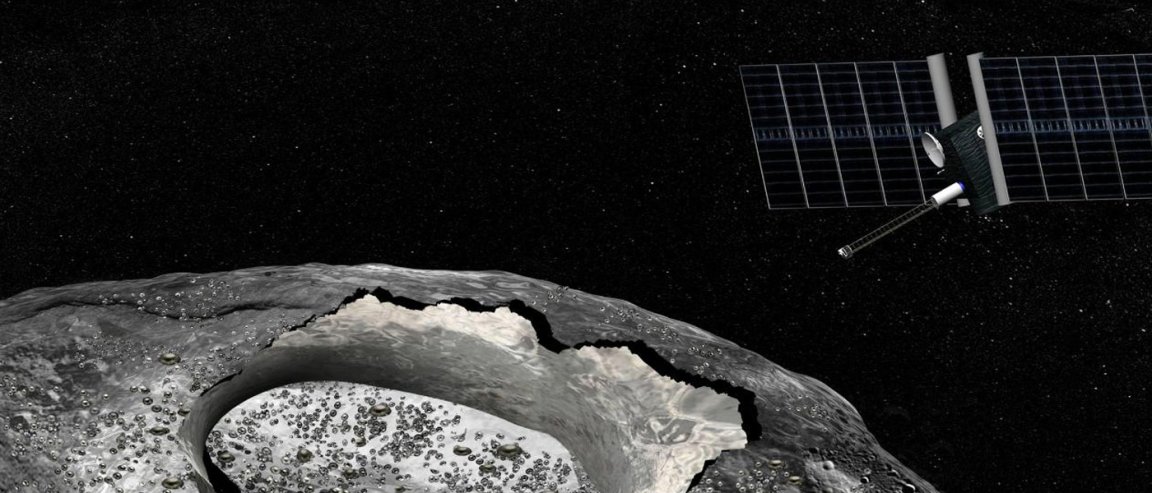
Learning About Inner Space
It’s the only known asteroid in the Solar System not made of rock or ice. Discovered way back in 1852, 16 Psyche is a strange hunk of metal orbiting between Mars and Jupiter, and is one of the ten most massive objects in the asteroid belt. Recently, NASA just gave the thumbs up for a mission to send a probe to 16 Psyche, as part of two newly approved Discovery Program missions—missions that could reveal a great deal about how the earliest planets that orbit the Sun were formed.
“This is an opportunity to explore a new type of world—not one of rock or ice, but of metal,” explained planetary scientist Lindy Elkins-Tanton, who first proposed the mission in 2015. “16 Psyche is the only known object of its kind in the Solar System, and this is the only way humans will ever visit a core. We learn about inner space by visiting outer space.”
The Psyche mission is expected to launch by 2023 and arrive at its destination in 2030. The long journey will include an Earth gravity assist maneuver in 2024, and a Mars flyby in 2025—two encounters that will provide an opportunity to do some interesting science on the voyage. The robotic mission will spend 20 months in orbit taking photos of 16 Psyche, measuring its composition, and registering the object’s magnetic field strength and gravity.
Believed to have once been the liquid metallic core of a planet about the size of Mars, 16 Psyche has a diameter of more than 200 kilometers (124 miles) and seems to be mostly made up of iron and nickel—with a surface possibly bearing volatiles like water or hydroxyl, according to observations from the NASA Infrared Telescope Facility. It’s thought that the surface of the ancient planet was whittled down after a series of collisions with multiple objects in the Solar System, leaving behind the naked metallic core as a kind of stillborn protoplanetary embryo.

Discovery Program
The Psyche mission can open a window onto the earliest ages of the Solar System, an era less than 10 million years after the birth of the Sun. The mission will help us understand how planets were formed, and give us an idea as to how planets and other bodies in the cosmos develop and differentiate into multiple layers—cores, mantles, and crusts—in their earliest histories.
Apart from the Pysche mission, NASA also approved a mission called Lucy to Jupiter’s Trojan asteroids. “Lucy will visit a target-rich environment of Jupiter’s mysterious Trojan asteroids, while Psyche will study a unique metal asteroid that’s never been visited before,” explains Thomas Zurbuchen, associate administrator for NASA’s Science Mission Directorate in Washington.
Like Psyche, Lucy will also help us understand an earlier, fascinating era in our Solar System’s history. “This is what Discovery Program missions are all about—boldly going to places we’ve never been to enable groundbreaking science,” Zurbuchen added. At the moment, both Psyche and Lucy are in their mission formulation stages.
While Discovery Program missions are relatively low-cost, the significance of their potential contributions is priceless. “These are true missions of discovery that integrate into NASA’s larger strategy of investigating how the Solar System formed and evolved,” said Jim Green, Planetary Science director at NASA. “These additional pieces of the puzzle will help us understand how the Sun and its family of planets formed, changed over time, and became places where life could develop and be sustained—and what the future may hold.”